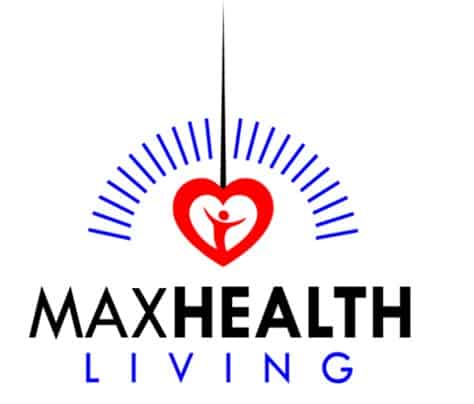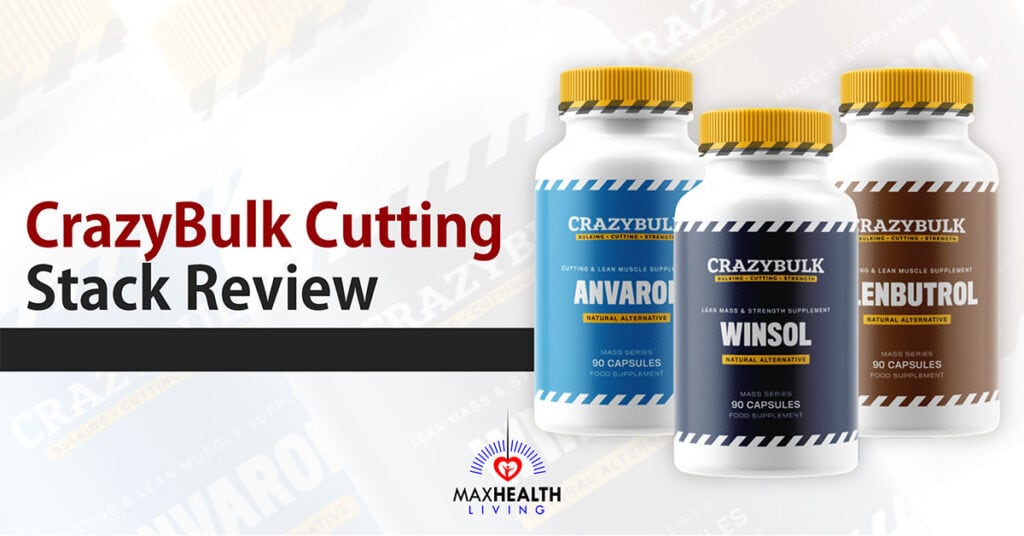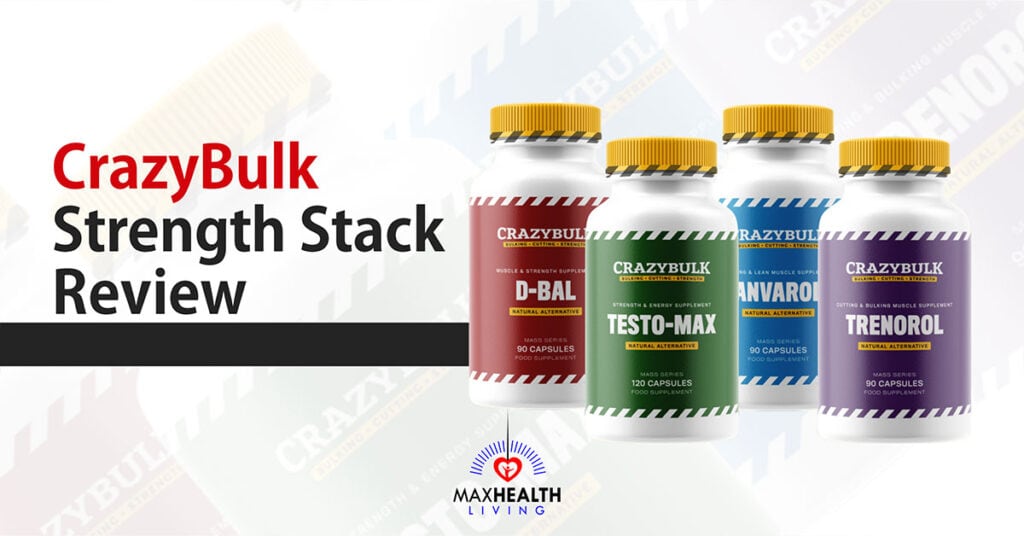Can You Get Stronger Without Building Muscle?
Max Health Living is a reader-supported site. Purchases made through links may earn a commission. Learn more.
What if you don’t want to look like a bodybuilder – can you get stronger without building muscle?
Fortunately, it’s a simple and versatile answer that you can use to plan your training. Today, we’re answering this question briefly, then looking at how strength, weight, and muscle mass play together in your body.
By the end of this article, you’ll know everything you need to get as strong as possible without needing to bulk up excessively, with or without a gym membership!
Short version: yes, kind of!
You can get stronger without building muscle – but this is a sub-optimal approach with major limitations.
You’ll typically be able to gain strength without building muscle in the short term, but it can become far more challenging over time.
Note that it is different from getting stronger without gaining weight.
You can stay 170lbs and never get heavier as you recomposition – becoming more muscular but less fat over time. That’s a different thing and is a much better approach for most people, even if it’s difficult.
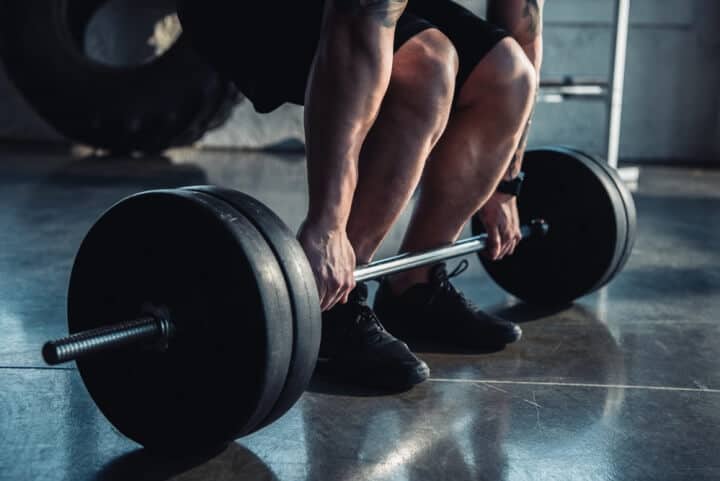
Remember: your diet controls changes in muscle mass, recovery, and strength gains no matter how you train or your focus. Get these factors right, and you can control how your weight changes, what that change is (muscle or fat), and the way your strength develops over time.
Recovery: the bridge from work to reward
We’re going to talk about training in this article, but one constant that always matters is the recovery you go through after a workout.
This is the key to your gains – bulking up, cutting down fat, building more muscle, or getting stronger.
Diets rich in protein are important for all these goals and should be one of your top priorities. Calories measure body weight change – if you eat less than you use, you lose weight. If you eat more than you use, you gain weight.
Training and protein intake let you control what you gain. More training and more protein = more muscle gain or more fat loss. Less training and less protein = more muscle loss and more fat gain.
Put these variables to work for you no matter your goals, and you’ll be more successful. This is just a brief overview so we can get to the juicy stuff: how does strength work, how do you build muscles, and what can you do to change how these two results show up in your training?
How can you get stronger?
Strength results from how big your muscles are and how efficiently you recruit this muscle size.
There’s more to it than that, but this is the basic idea you need to keep in mind when discussing the overlapping, but not identical, ideas of muscular strength and muscle size.
The biggest people in the world aren’t always the strongest, and many of the strongest people aren’t that big to look at. This is because strength is a skill: it’s a combination of changes in the muscles, the nervous system that controls them, and the technical skill and movement patterns that you train.
For example, someone with slightly bigger legs isn’t necessarily a stronger squatter than someone with smaller legs but has far more experience.
This is because you get better at what you train for, and you always have to do something to test strength – which muddies the waters.
Let’s look at a few contributors to muscle strength and size that make it a super interesting question:
-
Control and coordination
When testing strength, studies show us that there’s more to it than just the sheer size of the muscle. Control – the ability to recruit muscles and certain types of muscle fibers (“fast twitch fibres”) – is even more important for how you perform in strength tests of all kinds.
Your ability to control your body is important in overcoming internal resistance and putting as much force as possible into the exercise you’re using to test strength.
This is important because strength is the maximum force a muscle can produce.
However, you’ll usually need to show that force production off with an isolation exercise (like a leg extension) or a compound exercise with multiple joints and muscle groups (like a squat or leg press).
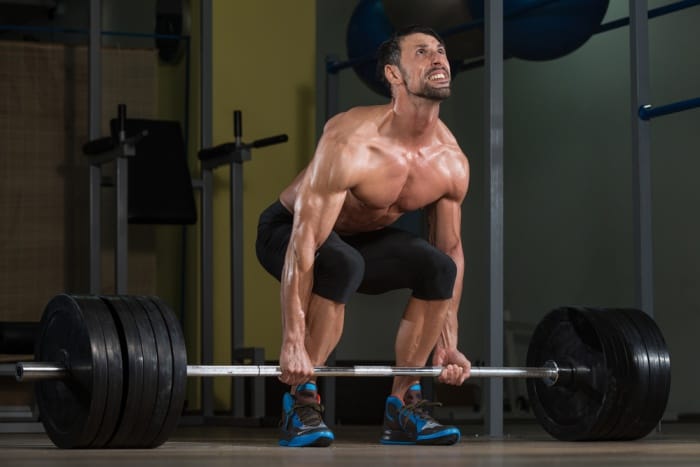
Control and coordination make you stronger without actually building muscle mass.
-
Stability is required
Another thing that goes into high force production – or strength – is stability. Studies on the two show that people who produce more stability, like in a bench press or overhead press, universally have stronger results on strength tests.
These are some characteristics you might not get if you don’t develop other areas of the body – or have familiar experience with the testing movements.
If you are asked to perform a heavy push press, you might not know what you’re doing and produce a limited result. This is one example where proper stability is hard to achieve, and the weakness or inexperience of the core, hips, legs, and shoulders can all contribute to far worse performance.
This is a problem because – as mentioned above – strength is specific to each movement, and the individuals who have trained them are the best at them! Stability is just one example of this.
More stability makes you stronger without building more muscle in the ‘prime movers’ for a lift.
-
Good sequencing, technique, and balance
Good lifting technique is another way to get stronger without building muscle. You can lift more weight if your technique improves, even if your muscular strength doesn’t improve during that time.
Sequencing is about the time you use certain muscles, the stabilizing role they play during a lift, and how they might contribute to things we know help you lift more – like balance and stability.
Take a deadlift, for example. If your hips are weak from the start or you don’t use your leg drive properly, you’ll not lift as much. In this exercise, you’ll end up rounding your back or unbalancing your stance, limiting the amount of can lift, especially safely.
A better setup and sense of how the lift should work can improve strength numbers.
This is true for exercises with more complexity – like squats, deadlifts, and presses – but is also partially true in isolation exercises like the bicep curl or leg extension.
Knowing how to move efficiently is a key player in strength that has very little to do with how hard a single muscle contracts!
Improving technique makes you stronger without building more muscle (immediately).
The Case Study: Bodybuilders
One amazing example of these areas where non-muscle changes make someone stronger is obvious when we compare a bodybuilder with a powerlifter or weightlifter.
Bodybuilders train for muscle size and proportions, symmetry, and posing. Powerlifters train to lift the most weight possible in the squat, bench press, and deadlift. The result is that bodybuilders are much bigger with larger muscles and a significantly larger cross-section.
This is because these athletes do more practice in exercises we typically use to measure strength – the squat, deadlift, and bench press.
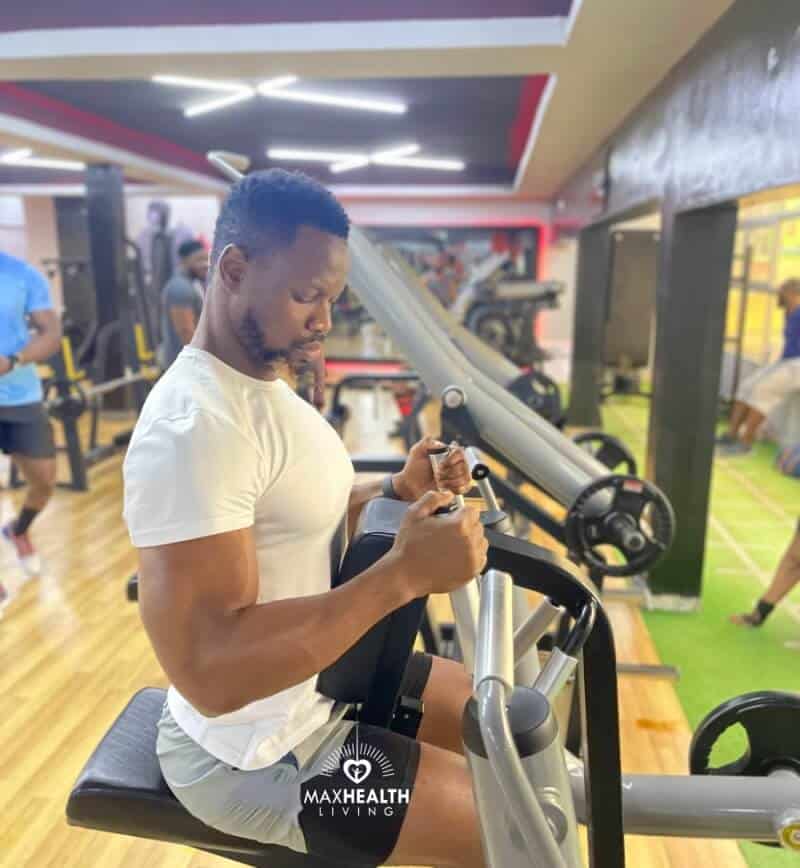
The accessory exercises like rows, overhead press, and other exercises overlap significantly. However, what you’ll typically see is that smaller powerlifters are much stronger in these exercises compared to larger bodybuilders.
However, you may also find that bodybuilders are stronger in some tests, especially those isolation exercises that they train often.
This speaks to the role of practice, technique, sequencing, and proper stability from time spent training a lift!
How Do You Build Muscle?
The short version is that you build muscle when you challenge muscles to lift weights with more effort than before. This can come from heavier weights, more reps, training under more fatigue, or using more complex or difficult variations of the same exercises.
You can use exercise variety to add novel challenges, shake things up, and change the challenge completely.
-
More volume
Muscle building key #1: you need to do more over time to strengthen.
That specifically refers to volume, the total ‘work done when you add up all the weights and reps and sets you do in a training day, week, month, or program.
The idea is that one way or another, you need to do more to grow more.
Your body adapts to the demands you put on it, and you must keep patiently, sustainably escalating those demands in training. This is usually most obvious in linear progression programs that add a small amount of weight to the bar or dumbbell each session or week.
However, you could also significantly improve muscle growth by doing more sessions, more reps per set, more sets in total, or more exercises in total for a muscle group.
You can also make individual exercises harder to increase volume by adding a slow eccentric (lowering portion) or a 1-and-a-half rep style to add total mechanical work.
-
Time under tension
Time under tension is a classic bodybuilding phrase that refers to a simple truth you must remember.
This is muscle-building key #2: a rep is not just a rep; they’re not all equal.
A slow, controlled rep with a slow negative is more real volume than a rep that you blast out by compensating (like a cheater curl) and with a poorly-controlled eccentric portion.
The time you spend under tension in the controlled rep is longer and has far more muscular engagement and activation and better use of stabilizer muscles. This helps you build muscle more per rep and gives you a more reliable way to determine if you’re increasing volume.
If you go from 5 sets of 5 controlled reps to 5 sets of 6 with sloppy performance, and they take the same time, did you get stronger?
It’s not clear that you did, as you recruit more passive tissues and muscles other than the one you’re trying to strengthen!
-
Metabolic change
Muscle building key #3 is metabolic change is part of building bigger muscles.
This refers to the changing chemistry in muscles that happens during higher-rep sets and with the kind of training that bodybuilders use – such as large sets, short rest periods, high volumes, drop-sets, and other ways of doing a lot of work/reps, often with moderate weights.
These simple things spur muscle growth without directly increasing strength gains.
These include anything done for a ‘muscle pump,’ which is a straightforward attempt to boost muscle chemistry change, improve cell volume, and squeeze out more muscle protein synthesis – at the cost of a higher recovery demand and more performance loss (in the short term).
Simply put, you need to occasionally push your muscles into higher rep sets to get the benefits of both high mechanical tension (from heavier weights) and metabolic change (from higher reps) to maximize muscle growth.
This helps improve the ‘wet weight’ of muscles, too, increasing water and glycogen storage (another indirect mechanism for more muscle growth, too).
The case study: Powerlifters
One of the most important things to remember is that getting bigger produces strength gains over time.
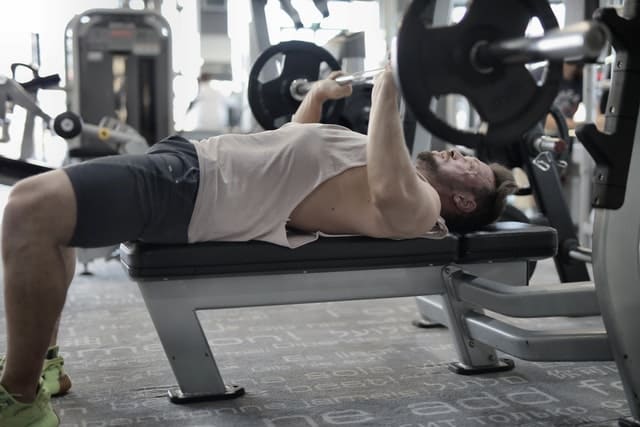
Powerlifters – who only care about strength – use regular muscle-building training to help them produce more strength in the long term.
These hypertrophy blocks help powerlifters build more muscle mass to unlock the greater potential of bigger muscles. This also helps them prevent injury, build metabolic work capacity, and stimulates long-term strength gains that they wouldn’t be able to get otherwise.
It’s important to see that sometimes building maximal strength requires muscle growth – and avoiding muscle growth can limit maximum strength very quickly in your lifting career.
Can You Get Stronger Without Building Muscle?
Yes, you can get stronger without building muscle because there are two components to strength: building muscle and improving the efficiency of that muscle.
The second is possible without the first and is often seen in lower weight classes in powerlifting and weightlifting, where smaller people lift immense weights. Regular training makes the body more effective at producing lots of force quickly.
It comes from adaptations to the nervous system and how it controls the muscles.
Regular high-force training (typically from lower reps with more weight) is perfect for this while adding high-speed movement against moderate weights also improves neuromuscular efficiency.
You can bolster these basic adaptations with some ‘broader’ improvements that help strength.
These include balance, stability, control, coordination, and removing weak links in compound movements (e.g., strengthening weak glutes to improve your squat). These are all ways to lift more weight without needing to add more muscle mass.
Strength and muscle mass both depend on a good diet, however. You will not get stronger if you are eating poorly – not eating enough and under-eating protein specifically.
Whatever your goals, your diet needs to ensure proper recovery to maintain your muscle mass!
How Do You Get Stronger Without Building Muscle?
There are a few ways you can get stronger without building muscle: more weight, fewer reps, more focus on passive tissues and control, better stability, technical improvements, and reduced exercise variety – as well as adding speed training.
- More weight, fewer reps: Training with heavy weights in shorter sets makes you stronger without as much muscle gain. Use this type of training, often in the 1-4 rep range, to become stronger without prompting muscle growth
- Eccentric training: Slow down the lowering portion of the lift to strengthen tendons and other ‘passive’ tissues, which are responsible for strength and muscles. These won’t build as much muscle mass but will immensely strengthen your body and joints
- Control and stability: Practice control, stability, balance, and coordination specifically. These help you improve your strength and force output without directly contributing to muscle growth and will help you get stronger faster than you get bigger
- Technical practice: Getting better at any movement makes you stronger, and proper technical focus is one of the best ways to get stronger with or without muscle gains. Put the movement together with proper control, positions, and the right order of muscle activation
- Specificity (reduce variety): Less variety means more strength in the specific things you train and a smaller amount of muscle growth due to the non-novel stimulus. Your body won’t respond with muscle growth as severely with a smaller pool of exercises over a long time
- Speed: Train speed and power exercises like jumps and throws to build explosive power, a supporting athletic trait for strength that doesn’t build muscle mass since it doesn’t load muscles for long enough to produce muscle growth
The Real Question: Why would you want to avoid building muscle?
Remember that you can build muscle without gaining weight. There’s no good reason to avoid building more muscle mass, even if you want a leaner and smaller physique.
There are tons of benefits to muscle mass that aren’t just about strength:
- Muscle protects joints from injury
- Strengthening muscles and adding mass reduces vulnerable joint angles and muscle lengths.
- Muscle mass helps regulate metabolism and puts you in control of body composition change.
- Muscles are the defining change that adjusts your silhouette and makes you look athletic.
- You don’t need to gain fat to build muscle.
- Building muscle can be a patient process with very healthy methods and results.
Overall, building muscle is a good thing. It’s one of the main things people use weight training and calisthenics for because it’s so good for the body, mind, and performance.
Don’t cut muscle gain off if you can help it; try to prioritize balance and the adaptations that suit you without needlessly reducing the benefits of training, diet, and sleep!
Getting Stronger Without Getting Bigger: FAQs
Can you build muscle without gaining size?
Yes – you can build muscle without gaining total size if you’re recomposition. This is what happens when you burn fat and gain muscle at the same time.
The result is a stronger body with more muscle but not increasing size or weight.
This is a common choice for beginners because it takes stress off of worrying about bulking or cutting. It’s also easier for total beginners to weight training than experienced trainees, as this highly-coveted body change becomes more difficult as you become leaner and more muscular.
You must eat a slight calorie deficit (around 5% -10% less than your maintenance needs – TDEE), high protein, and proper carb intake timing around your workouts.
This is just a high-quality diet, and the result would be better suited to your training – especially with HIIT and strength training.
Is it possible to get stronger without gaining weight?
Yes, you can easily get stronger without gaining weight.
Weight change is the result of your diet, while the development of strength comes from building muscle and improving the neuromuscular efficiency of your muscles.
This means you can get stronger without gaining weight in two main ways:
- Recompositioning: As mentioned above, you can gain muscle (and strength) while still losing fat. This is a slow and difficult process,s but technology allows you to build muscle mass and get stronger without gaining weight
- Neuromuscular efficiency: Practicing high-force movements makes you better at performing them. That’s what strength is. So if you train with relatively heavy weights and high-force, or even high-speed exercise, you’ll get stronger without needing to gain weight
This means you can get stronger without gaining weight, either because you’re changing composition at the same weight or changing how your muscles and nervous system work without changing weight.
The latter can also be done while gaining or losing weight, too.
Can you build strength and muscle without going to the gym?
Strength and muscle don’t require a gym membership, free weights, or resistance machines.
You can build strength and muscle mass with bodyweight exercise, plyometrics, sprints, and other non-equipment strength and power training – though they are less efficient and require more knowledge and patience.
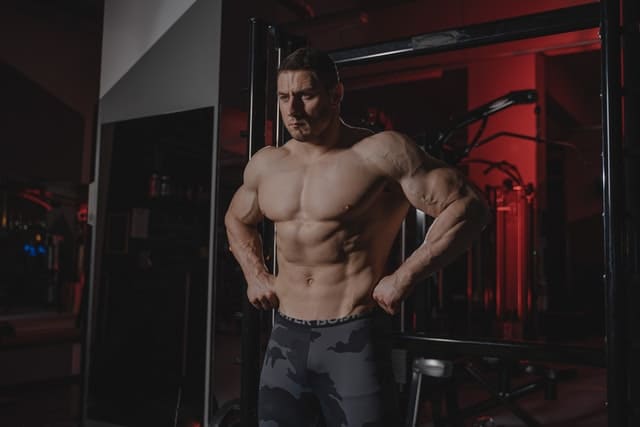
Gymnasts are the best example of how to build strength and muscle without a gym (specifically, without conventional resistance training or free weights).
They use bodyweight exercises to build amazing amounts of muscle, incredible strength, and stunning body control that even the biggest bodybuilders, strongest powerlifters, or most powerful weightlifters couldn’t hope to achieve.
It’s a completely different type of strength with different priorities, but it still looks amazing in terms of the physique and feats of strength.
This comes from using leverage and bodyweight to train, with more difficult variations being the alternative to adding more weight – and you can still increase volume or tonnage (weight * sets * reps) by adding reps and sets to a workout.
How can you build muscle without weights?
You can build muscle without weights using elastic resistance (resistance bands), gymnastic strength training, and mechanical resistance.
Bodyweight training – like gymnastic strength and calisthenics – is the best way to build muscle without free weights or gym access.
Exercises like push-ups pull, ups, dips, ring rows, inverted rows, and ring push-ups are still used by bodybuilders even with weight access because they’re so effective. Specialized options like pistol squats, step-ups, and handstand push-ups also help target difficult muscles.
You can build muscle and strength without weights if you’re willing to learn how leverage works, progress from exercise to exercise patiently, and work with diligence on adding more range, complexity, and reps and sets to your calisthenics workouts.
As ever, diet is still key to building muscle and gaining weight, no matter how you train!
How can I get stronger without gaining muscle mass?
You can get stronger without gaining muscle by improving your neuromuscular efficiency, building coordination, developing more stability, or just practicing techniques to move better.
These allow you to lift more weight without necessarily gaining muscle mass (depending on your diet).
These are all available with regular training on the exercises you want to get stronger with, as the more time you spend on a specific movement, the stronger it becomes.
However, consistent training will improve general strength without needing added muscle mass, and training with good recovery and a maintenance diet will be enough to support this improvement in strength.
You can back this up with more stability and speed-strength training.
These are perfect for building strength without building muscle mass, as the ability to produce force rapidly is a key player in maximum lift performance – especially in the 1-5 rep range.
What is the best way to increase strength?
The best way to increase strength is a combination of mid- and low-rep strength training with occasional periods of higher rep training and more exercise variety.
This is even better with periodic high-speed and plyometric training, which helps improve fast force production and thus weight lifting and gymnastic strength.
This also relies heavily on your diet and sleep, which are the main drivers for getting stronger.
Think about it like this: your training signals your body to get stronger, but recovery (diet + sleep) is how your body makes that happen. Poor recovery ruins even the best training.
How do you make muscles stronger?
Muscles become stronger when you use them – which can include either muscle mass growth, improved neuromuscular efficiency, or both.
You make muscles stronger by using them, eating a diet that helps them repair (lots of protein and carbs), and plenty of rest. This means you’ll be able to build better muscles with just about any type of training – whether free weights in the gym or calisthenics training at home.
Focus on consistently using muscles and practicing movements you want to improve.
This is the ultimate key to making muscles stronger. You will typically improve muscle size along the way – but the change in total body weight results from your total calorie intake vs. your total calorie spend.
Final Thoughts
You can build strength without gaining muscle mass, but you should try to do both. There are no drawbacks to being more muscular, and it offers some of the best benefits for your body, mind, and training performance.
Muscle mass and strength are keys to longevity; they develop together, overlapping but not identical.
You can train to build one or the other as a top priority, but gaining a little of both is key to maximizing any long-term strength or size goals you might have.
Put your training quality in order, then prioritize your diet and sleep.
Prioritize what you want to be better at, and use food and weight change to achieve that – don’t worry too much about the small stuff like specific muscle gains unless you are something specific and can’t live with an extra lb of muscle.
Important Disclaimer: The information contained on MAX HEALTH LIVING is intended for informational and educational purposes only. Any statements made on this website have not been evaluated by the FDA and any information or products discussed are not intended to diagnose, cure, treat, or prevent any disease or illness. Please consult a healthcare practitioner before making changes to your diet or taking supplements that may interfere with medications.
Who We Are

We are a team of fitness, health, and supplement experts, and content creators. Over the past 4 years, we have spent over 123,000 hours researching food supplements, meal shakes, weight loss, and healthy living. Our aim is to educate people about their effects, benefits, and how to achieve a maximum healthy lifestyle. Read more.
